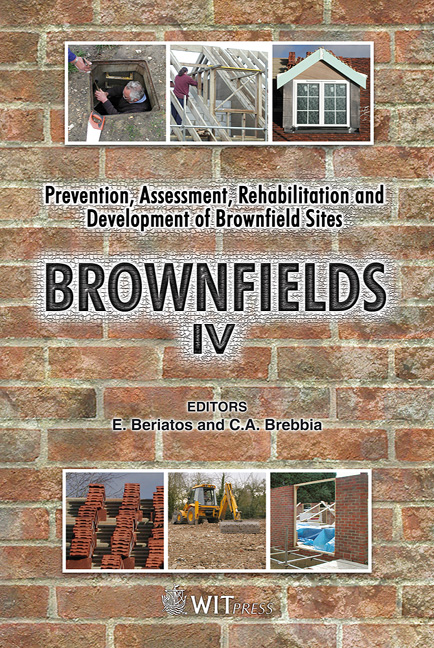GEMS: GIS And Geo-statistics Integrated In Brownfield Remediation And Redevelopment, Applied In The Vilvoorde Region
Price
Free (open access)
Transaction
Volume
107
Pages
10
Page Range
55 - 64
Published
2008
Size
1,533 kb
Paper DOI
10.2495/BF080061
Copyright
WIT Press
Author(s)
P. Schrooten & A. Van Alphen
Abstract
Belgium was one of the first European countries to become industrialised. The initial industrialisation has caused numerous soil and groundwater contaminations. Almost 70 years later, these contaminations became a major issue of concern for the redevelopment of former industrial areas. Real-estate developers are familiar with the costs for demolishing and redeveloping industrial areas, but less with the cost due to soil contamination. Two types of costs associated with the contamination can be identified: (1) the cost for the remediation (removing risks) and (2) the cost for treatment of the less contaminated soil during construction works (redevelopment). Due to these important cost factors, the need to assess them more reliably becomes more important. To address this issue the GEMS (Geographic Environmental/Economical Management System) tool was developed. This GIS based programme allows the designation of different types of land use to different areas (e.g. housing, industry, roads, green areas…) of the redevelopment area. For each drawn land use specific parameters need to be added (depth of underground constructions, percentage of surface area excavated for underground lines…). The model then determines which volume of soil will need to be remediated based on the selected land use and parameters. This is automatically done for a risk-based and reference value remediation target. It also determines the remaining volume of soil that needs to be excavated based on the planned infrastructure and that which needs further treatment before it can be reused. For these volumes of soil a cost is calculated based upon the type of contamination and the contamination levels. The basis of the model is a geo-statistical 3D contamination map for different types of contaminant groups (BTEX, TPH, PAH, heavy metals, cyanides…). These maps are calculated from site measurements. A first working example of the GEMS tool was developed for the Watersite Brownfield project (Novovil) in the city of Vilvoorde. In the past a large portion of Vilvoorde city was used for heavy industry. It also incorporated some major traffic lines, some scattered housing and a railway. The GEMS tool allowed the Watersite Brownfield developers to model different urban planning scenarios in order to determine the most ideal scenario for the future redevelopment. Keywords: regional redevelopment, GIS, geo-statistics, soil contamination.
Keywords
regional redevelopment, GIS, geo-statistics, soil contamination.




